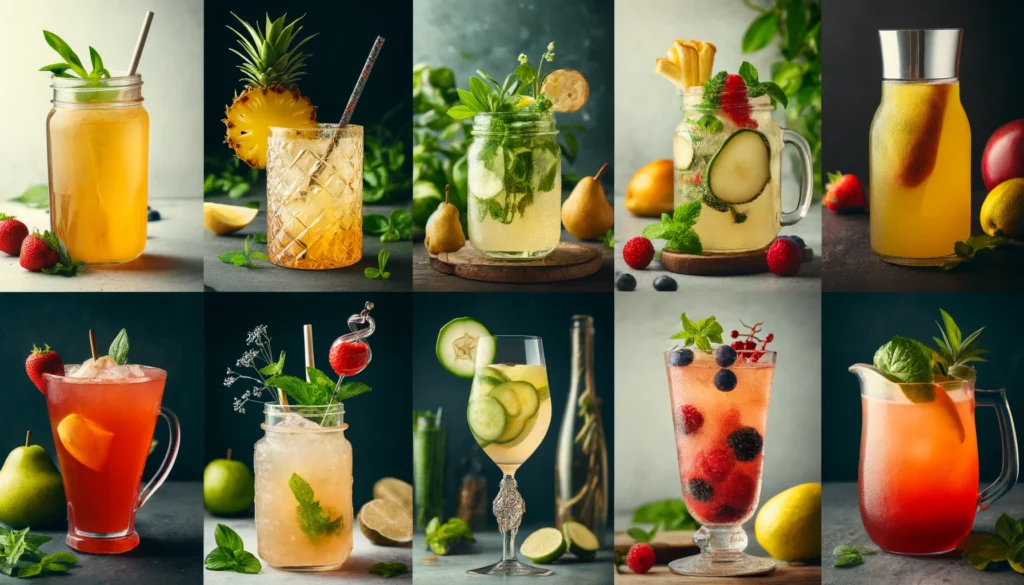In the realm of social gatherings, the art of mixology is often synonymous with alcoholic beverages. However, the growing demand for inclusivity and health-conscious choices has spurred a renaissance in the world of non-alcoholic drinks. Mocktails, once simple alternatives, are now center stage, offering complexity, sophistication, and fun, all without the alcohol.
1. The Rise of Mocktails
The increasing popularity of mocktails can be attributed to several factors, including health trends, dietary restrictions, and the rise of sober curiosity movements. These beverages cater to everyone, from expectant mothers to teetotalers, ensuring that all guests feel included and can enjoy a crafted drink that feels special.
2. Essentials of Mocktail Crafting
Creating a memorable mocktail involves more than just omitting the alcohol. It requires a thoughtful blend of flavors, textures, and appearances. Here’s what you need to know:
- Flavor: Balance is key. The best mocktails have a complexity that rivals their alcoholic counterparts, achieved through a mix of sweetness, tartness, bitterness, and spice.
- Texture: Ingredients like fruit purees, herbs, spices, and carbonated sodas help add layers of texture that make each sip more interesting.
- Appearance: Aesthetics are vital. The right garnish, an attractive glass, and vibrant colors can transform a simple drink into a showstopper.
3. Signature Mocktail Recipes
Here are some innovative recipes that highlight the versatility and excitement non-alcoholic drinks can offer:
- Tropical Fizz: This drink combines fresh pineapple juice, coconut water, and a splash of lime, topped off with ginger beer for a zesty finish. It’s perfect for summer parties or as a refreshing pick-me-up.
- Herb-Infused Lemonade: Elevate the classic lemonade by infusing it with fresh herbs like basil or lavender. The addition of honey balances the tartness, and the herbs introduce a subtle aroma and flavor that is both refreshing and relaxing.
- Sparkling Pear Punch: A blend of pear nectar, a hint of vanilla, and honey, topped with sparkling water, creates a sophisticated, lightly sweetened beverage that’s perfect for elegant dinners or a new year’s toast.
- Cucumber Mint Cooler: With muddled cucumber and mint, this cooler is as hydrating as it is refreshing. The addition of lime juice and soda water makes it an ideal drink for spa days or a garden party.
- Berry Blast Smoothie: For a non-alcoholic treat that doubles as a dessert, blend together an assortment of berries with banana and a splash of almond milk. This antioxidant-rich smoothie is great for morning gatherings or a healthy alternative to sugary drinks.
4. Thematic and Seasonal Adaptations
Adapting mocktails to fit themes or seasons can add an extra layer of excitement to any event. For instance, adding pumpkin spice to drinks in the fall, or peppermint during the winter holidays can make your beverage menu feel festive and thoughtful.
5. The Social Impact of Mocktails
Beyond just being a beverage choice, mocktails represent a broader shift towards inclusive and responsible hosting. They ensure that every guest, regardless of their lifestyle or dietary choices, can enjoy the art of drinking together. This inclusivity strengthens social bonds and enhances the overall experience of any gathering.
In conclusion, the world of non-alcoholic beverages is no longer just an afterthought. It’s a vibrant, evolving landscape that mirrors the creativity and sophistication of traditional cocktail culture. By embracing mocktails, hosts can offer a welcoming, inclusive, and exciting environment for all guests, making every social occasion memorable and enjoyable.


